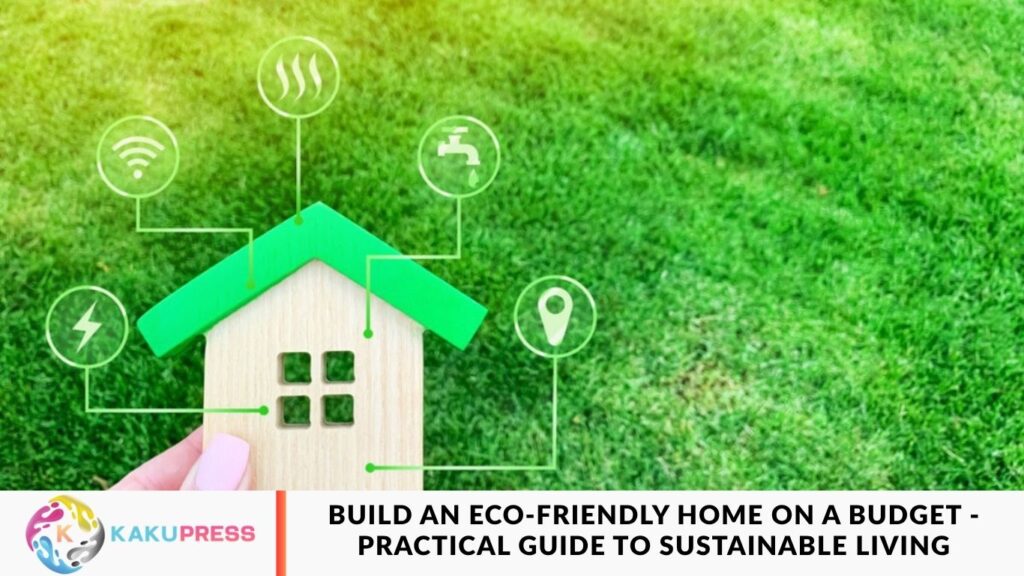Building an eco-friendly home doesn’t have to drain your wallet. Many believe that sustainable construction demands expensive materials or advanced technology, but the truth is quite the opposite. With smart planning, cost-effective materials, and eco-conscious design, you can build a green home that’s both affordable and energy-efficient.
An eco-friendly house not only reduces energy consumption but also cuts down waste and supports a more sustainable lifestyle. In this guide, you’ll discover practical and budget-friendly ways to design and build an environmentally responsible home without overspending.
Choose a Sustainable Location
The location of your home significantly influences its environmental footprint. Whenever possible, select a site that optimizes natural light and airflow, allowing you to reduce dependence on artificial lighting and air conditioning. Positioning your home strategically can enhance energy efficiency while improving indoor comfort.
Additionally, building close to public transportation, schools, and essential amenities can help minimize car usage and lower your overall carbon emissions. A well-chosen location not only supports sustainable living but also contributes to long-term savings and a healthier environment.
Use Recycled and Reclaimed Materials
Using recycled or reclaimed materials is one of the most effective ways to cut costs while staying eco-conscious. Incorporating reclaimed wood, salvaged bricks, and recycled metal not only reduces construction expenses but also gives your home a distinctive, rustic charm. These materials often come with history and character that new ones simply can’t replicate.
You can find high-quality reclaimed materials at demolition sites, salvage yards, or local resale stores, often priced far lower than brand-new alternatives. By choosing recycled resources, you’re not only saving money but also helping reduce landfill waste and the demand for new raw materials—making your home both affordable and environmentally sustainable.
You Like It: Tech News
Opt for Energy-Efficient Design
Designing for energy efficiency is the foundation of an eco-friendly and cost-effective home. With the right approach, you can reduce energy bills and environmental impact without overspending. Here are some budget-friendly strategies to make your home more energy-efficient:
- Passive Solar Design: Position windows and living spaces to capture maximum sunlight during winter while ensuring proper shading in the summer. This natural heating and cooling method reduces the need for artificial climate control.
- Proper Insulation: Invest in affordable insulation options such as recycled denim, cellulose, or sheep’s wool. Good insulation keeps your home warmer in winter and cooler in summer—saving energy and money year-round.
- Cool Roofs: Select light-colored or reflective roofing materials that deflect sunlight rather than absorb it. This helps maintain cooler indoor temperatures and reduces the need for air conditioning.
Choose Affordable Eco-Friendly
Affordable and Sustainable Building Materials
Sustainable construction doesn’t have to come with a high price tag. Choosing the right eco-friendly building materials can help you save money while reducing your environmental footprint. Here are some cost-effective options to consider:
- Bamboo: A durable, fast-growing, and sustainable alternative to hardwood, offering strength and flexibility at a lower cost.
- Compressed Earth Blocks: Made from locally sourced soil, these blocks are budget-friendly, require minimal energy to produce, and provide excellent thermal insulation.
- Straw Bales: A low-cost, highly insulating material perfect for wall construction, helping maintain stable indoor temperatures throughout the year.
Install Energy-Efficient Systems
Enhancing your home with energy-efficient appliances and systems is a smart investment that pays off in long-term savings. You don’t need to spend a fortune—these affordable upgrades can significantly cut your energy bills:
- LED Lighting: Uses up to 80% less energy and lasts much longer than traditional incandescent bulbs.
- Solar Water Heaters: A budget-friendly renewable energy solution that reduces electricity consumption without the high upfront cost of full solar panels.
- Energy Star Appliances: Certified to consume less electricity and water, these appliances help lower utility costs while supporting a more sustainable lifestyle.
Harvest Rainwater and Reduce Water Waste
Cutting down on water waste is a simple yet powerful way to make your home more eco-friendly. By using a few smart solutions, you can save water, lower your bills, and live more sustainably without spending a fortune.
Installing a rainwater harvesting system lets you collect and reuse rainwater for everyday tasks like watering plants or cleaning—giving you a free, natural water source. Likewise, switching to low-flow faucets and toilets helps reduce water use while keeping performance the same.
Incorporate DIY and Second-Hand Items
Creating an eco-friendly home doesn’t require buying everything brand new. You can save money and reduce waste by choosing second-hand furniture, doors, and fixtures from thrift stores, online marketplaces, or salvage yards.
DIY projects are another smart way to cut costs and add a personal touch—repurposing old materials for shelves, tables, or décor not only keeps items out of landfills but also gives your home a unique, sustainable style.
Frequently Asked Questions
What is an eco-friendly home?
An eco-friendly home is designed to minimize environmental impact by using sustainable materials, energy-efficient systems, and water-saving techniques while promoting a healthy living environment.
Can I build an eco-friendly home on a tight budget?
Yes! With smart planning, recycled materials, energy-efficient appliances, and DIY solutions, you can create a sustainable home without overspending.
Which sustainable materials are affordable for construction?
Cost-effective options include bamboo, reclaimed wood, compressed earth blocks, and straw bales, which reduce expenses while supporting eco-friendly building practices.
How can I make my home energy-efficient on a budget?
Incorporate passive solar design, proper insulation, cool roofs, LED lighting, and Energy Star appliances to reduce energy consumption and lower utility bills.
What water-saving methods work best in an eco-friendly home?
Installing rainwater harvesting systems and low-flow faucets, showerheads, and toilets helps conserve water and reduces monthly water costs.
Are recycled or second-hand materials safe to use in construction?
Yes. Salvaged wood, recycled metal, and reclaimed fixtures are safe when properly inspected and treated, offering both affordability and sustainability.
How does home location impact eco-friendliness?
Choosing a site with natural sunlight, proper ventilation, and proximity to public transport or amenities reduces energy use and your carbon footprint.
Conclusion
Building an eco-friendly home on a budget is not only possible but also rewarding. By combining smart planning, sustainable materials, energy-efficient systems, and water-saving solutions, you can create a home that is cost-effective, environmentally responsible, and comfortable to live in.

